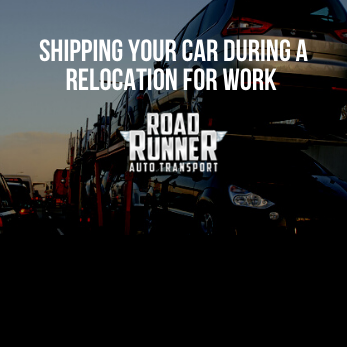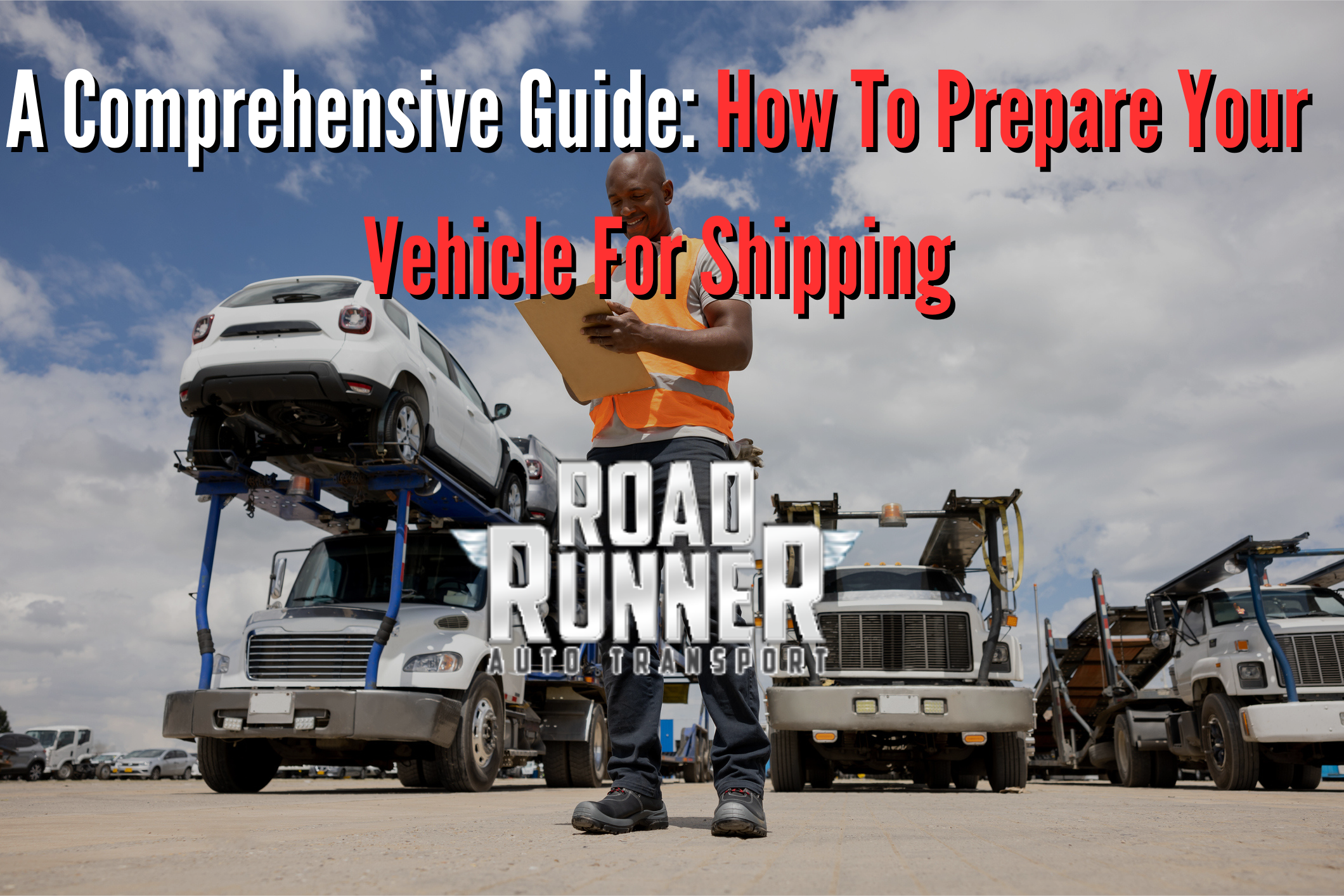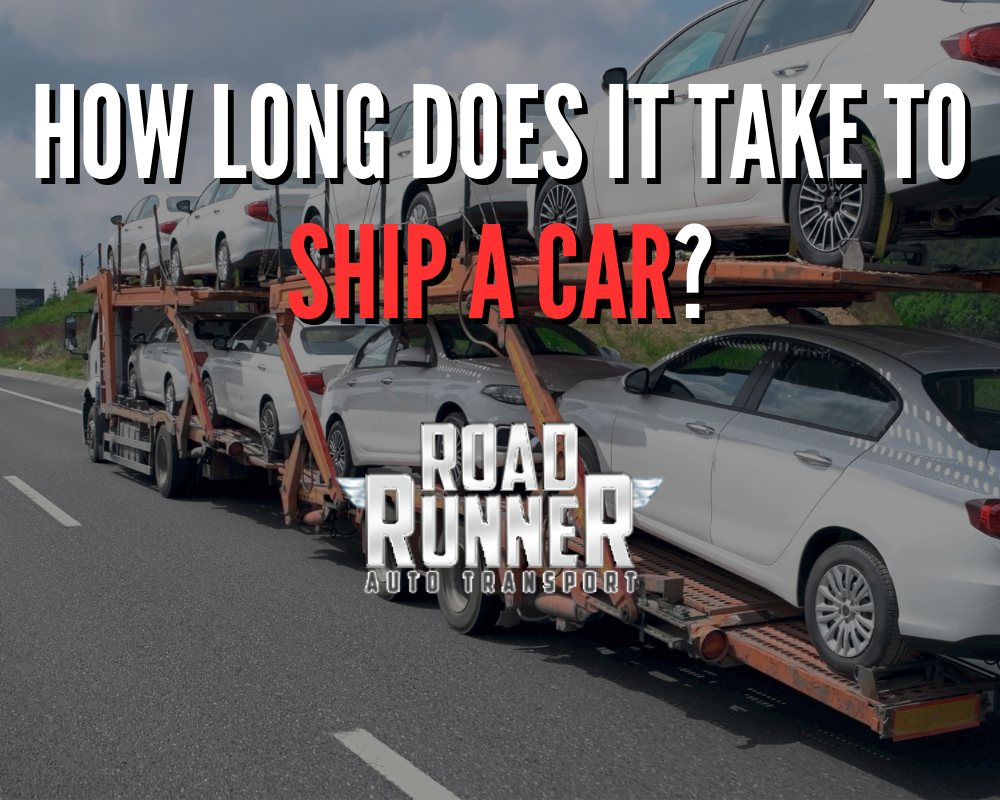
The trusted name in vehicle shipping for over 30 years!
- Track a Shipment
- Dealer Login
- Carrier Login
Speak with a shipping expert
(888) 777-2123

Back-to-School Driving Safety Tips
Posted on 09/18/2015

When it comes to the safety of your children, no precaution is too small. With back-to-school in full swing, drivers need to be extra careful and even more cautious than ever. Not only do drivers need to be careful and aware of young children crossing the street to enter school, they also need to be aware of pedestrians, cyclists, and safety personnel such as crossing guards, as well.
In addition, there are children who utilize their bicycles to get to and from school as well as those who do not get bus service and need to walk to school. There are several measures that you, as a driver, can take in order to ensure the safety of those returning back to school and for those who are responsible for transporting them, as well. From bus drivers to crossing guards, it’s imperative to do all that you can in order to keep everyone safe this school year.
There are several rules we can follow in order to ensure the safe and smooth transition of our children when they head back to school. Safety rules apply for all of us, from experienced drivers to newly-licensed high schoolers, and college students, as well.
Moreover, there are also safety tips you may wish to share with your children regarding walking or bicycling to school each day. If everyone does their part, back-to-school can begin and end with a safe start.
Back-to-School Safety Driving Tips for Teens
If there is a new teen driver in your home who will be driving back and forth to school as a first-time driver, it is important to educate them long before the start of the new school year:
- Get acclimated with the school route and safety rules of your district. Some schools are set on a main road while others are set back a bit off the road. If you have any questions, ask well in advance. School personnel are there to assist you weeks before the start of the school year.
- Take a ride or two to the school. Check out the traffic lights and their timing. Take a test run back and forth to the school at least once in order to get accustomed to the route.
- Have your teen watch a video or read a news article with photos of vehicles and lives that were destroyed while texting and driving. Show them case scenarios of adults as well as teens that were fatally injured while texting and driving – it can happen to anyone at any age.
- Walking and texting – have you ever noticed how many people (adults and teens alike) have crossed a busy, major intersection while wearing headphones or texting while crossing the street. If you cannot hear and if your eyes are on your cell phone, then how can you pay attention to the road? It just makes sense – common sense – to pay attention while crossing the street.
- Start your back-to-school routine weeks before school begins. By resetting your sleep schedule and getting used to rising early again, you avoid being overly sleepy in the mornings. Proper rest equates to proper alertness.
Back-to-School Safety Driving Tips for Adults
If you do not know the safety rules and guidelines of your particular school, make sure to find out in advance. You don’t want to be faced with the excitement and nervousness of a first day of school transporting your child at the same time as learning the rules of the road, especially if you are a new resident in the area.
- Whether you have children that you are transporting or a driver that passes by a high school on your way to work, it is important to learn which rules apply to your school zone.
- Make certain to become acclimated to your school safety rules. Some school areas are set on main strips and have flashing yellow lights; make certain that you and your teen know that it is necessary to slow down to the expected speed when passing these flashing lights.
- If you have a new teen driver, it is your responsibility to make certain that he/she knows the rules of safety when approaching a school that has students either entering or exiting to start or finish their days. It is in their best interest, as well as yours, and everyone else’s to reiterate these safety rules, even if driver’s education was taken and passed. It’s never a bad idea to reiterate these rules.
- While this might not sound like a road rule, it just makes sense – common sense – we all have days when we run late and things happen for which we were not prepared. Even on those days, it is important to be mindful that it is better to be late than to speed in a school zone. It could prove dangerous or even worse – deadly.
- Keep the crosswalk clear for walking pedestrians, especially students at all times.
- Never pass a school bus. While it might seem tempting to go around a school bus when you’ve been sitting still for two consecutive green light cycles, again – it’s better to be late than to be part of an accident. If and when at all possible, set your alarm for a few minutes earlier in order to arrive at your destination on time.
By taking responsibility, modeling appropriate driver safety, and going over the rules of the road, you team up with safety for back-to-school driving.
Instant Car Shipping Quote
Calculate your car shipping rate in 3 easy steps!
Back-to-School Driving Safety Tips
Posted on 09/18/2015

When it comes to the safety of your children, no precaution is too small. With back-to-school in full swing, drivers need to be extra careful and even more cautious than ever. Not only do drivers need to be careful and aware of young children crossing the street to enter school, they also need to be aware of pedestrians, cyclists, and safety personnel such as crossing guards, as well.
In addition, there are children who utilize their bicycles to get to and from school as well as those who do not get bus service and need to walk to school. There are several measures that you, as a driver, can take in order to ensure the safety of those returning back to school and for those who are responsible for transporting them, as well. From bus drivers to crossing guards, it’s imperative to do all that you can in order to keep everyone safe this school year.
There are several rules we can follow in order to ensure the safe and smooth transition of our children when they head back to school. Safety rules apply for all of us, from experienced drivers to newly-licensed high schoolers, and college students, as well.
Moreover, there are also safety tips you may wish to share with your children regarding walking or bicycling to school each day. If everyone does their part, back-to-school can begin and end with a safe start.
Back-to-School Safety Driving Tips for Teens
If there is a new teen driver in your home who will be driving back and forth to school as a first-time driver, it is important to educate them long before the start of the new school year:
- Get acclimated with the school route and safety rules of your district. Some schools are set on a main road while others are set back a bit off the road. If you have any questions, ask well in advance. School personnel are there to assist you weeks before the start of the school year.
- Take a ride or two to the school. Check out the traffic lights and their timing. Take a test run back and forth to the school at least once in order to get accustomed to the route.
- Have your teen watch a video or read a news article with photos of vehicles and lives that were destroyed while texting and driving. Show them case scenarios of adults as well as teens that were fatally injured while texting and driving – it can happen to anyone at any age.
- Walking and texting – have you ever noticed how many people (adults and teens alike) have crossed a busy, major intersection while wearing headphones or texting while crossing the street. If you cannot hear and if your eyes are on your cell phone, then how can you pay attention to the road? It just makes sense – common sense – to pay attention while crossing the street.
- Start your back-to-school routine weeks before school begins. By resetting your sleep schedule and getting used to rising early again, you avoid being overly sleepy in the mornings. Proper rest equates to proper alertness.
Back-to-School Safety Driving Tips for Adults
If you do not know the safety rules and guidelines of your particular school, make sure to find out in advance. You don’t want to be faced with the excitement and nervousness of a first day of school transporting your child at the same time as learning the rules of the road, especially if you are a new resident in the area.
- Whether you have children that you are transporting or a driver that passes by a high school on your way to work, it is important to learn which rules apply to your school zone.
- Make certain to become acclimated to your school safety rules. Some school areas are set on main strips and have flashing yellow lights; make certain that you and your teen know that it is necessary to slow down to the expected speed when passing these flashing lights.
- If you have a new teen driver, it is your responsibility to make certain that he/she knows the rules of safety when approaching a school that has students either entering or exiting to start or finish their days. It is in their best interest, as well as yours, and everyone else’s to reiterate these safety rules, even if driver’s education was taken and passed. It’s never a bad idea to reiterate these rules.
- While this might not sound like a road rule, it just makes sense – common sense – we all have days when we run late and things happen for which we were not prepared. Even on those days, it is important to be mindful that it is better to be late than to speed in a school zone. It could prove dangerous or even worse – deadly.
- Keep the crosswalk clear for walking pedestrians, especially students at all times.
- Never pass a school bus. While it might seem tempting to go around a school bus when you’ve been sitting still for two consecutive green light cycles, again – it’s better to be late than to be part of an accident. If and when at all possible, set your alarm for a few minutes earlier in order to arrive at your destination on time.
By taking responsibility, modeling appropriate driver safety, and going over the rules of the road, you team up with safety for back-to-school driving.
"I would definitely use RoadRunner Auto Transport again without a doubt. Excellent overall service from start to finish."
Trish A.
Miami, FL


"When I bought a car out of state I was unsure what to expect with the shipping. RoadRunner made everything so easy!"
Jenna D.
Lufkin, TX


"Out of all the car shipping companies we spoke with, RoadRunner was the most professional and knowledgable."
Corey L.
Boston, MA


"From the time of quote to the pick up of my vehicle and the delivery there was a very good communication."
Andres M.
Oakland, CA


Frequently Asked Questions
Get answers to some of the most commonly asked questions about the vehicle shipping process.










